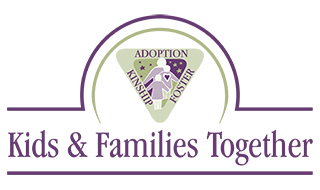Having Faith January 2020
Happy New Year and New Beginnings for 2020! I think of the New Year as a time to start fresh. With every new year we can continue to grow in our own self-understanding to create healthier relationships, especially with our children.
Many of us in our childhoods were allowed to express happy feelings. However, if we expressed anger or frustration, our parents attempted to over-rule our feelings by emotionally and physically pulling away or reacting in anger. All of us are more comfortable with some emotions than others based on our childhood experiences. For example, if you grew up in a family with domestic violence, you may instantly be triggered by angry emotions because you connect all angry feelings with a concern that it will lead to physical fighting. As adults, it’s our responsibility to work through the part of our life story that tells us to be afraid of a particular emotion; especially when it is being expressed by our child.
While we often want to respond differently to our child in stressful moments than our parents did with us, we often find ourselves reacting in ways that create emotional distance between us at a time when our child needs us to be emotionally available. In other words, being with our child in all of their emotions as they experience them, including sadness, anger, joy, pain, frustration, and so on is important and often challenging. Staying lovingly and calmly present with your child through these big feelings helps her to develop trust and feel secure by becoming less overwhelmed. Neuroscience and decades of research back this up. Staying physically and emotionally close to a child who is expressing a big emotion helps the child to grow up with emotional intelligence. We owe it to our children to understand our own triggers that cause us to pull away when our child is having a big emotion, that instead needs our understanding and support. Below is a scenario to which many of us can relate.
You take your child to the park even though you have errands to run, but you want to provide some fun time for your child. You have an abundance of joyful and relaxed moments together at the park and even stay 15 minutes longer than you had intended. Now, it is time to go and you are already running late. You tell your child it’s time to leave and he begins to cry loudly and tell you he doesn’t want to go, expressing a combination of anger and sadness. You feel your body tense and hear the following dialogue in your head, “I am embarrassed and my child is making a scene! How can he be so disobedient and unbearable when all I did was tell him it was time to go! Why am I having such a big reaction to my child’s upset and anger at having to leave the park?”
Looking back at your childhood, you might remember that anger was not an emotion that was encouraged, much less allowed to be expressed openly. You were taught that it was only okay to express happy emotions and that boys, even more than girls, were not allowed to cry. Without understanding this from your childhood, you will have a more difficult time staying present with your child to help him move through the feelings of anger and sadness, which are genuine feelings to experience when letting go of something fun. The more you are able to tolerate strong emotions, the healthier your child will become in growing their emotional intelligence. The less a parent is able to respond appropriately because of their own triggers from the past, the more a child will learn to shut down and hide from their genuine feelings. Subsequently, they learn to be ashamed and fearful of those feelings rather than embracing that all emotions are safe and essential in life.
Parents don’t have to be perfect. They just have to want to grow and change as they come to understand themselves and their children more fully and clearly.
 Kids and Families Together
Kids and Families Together